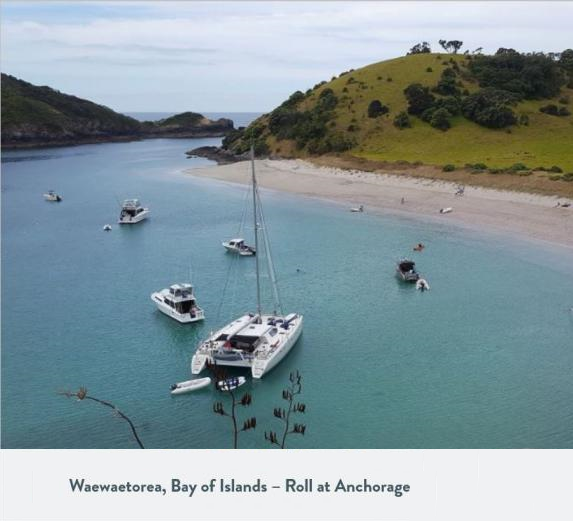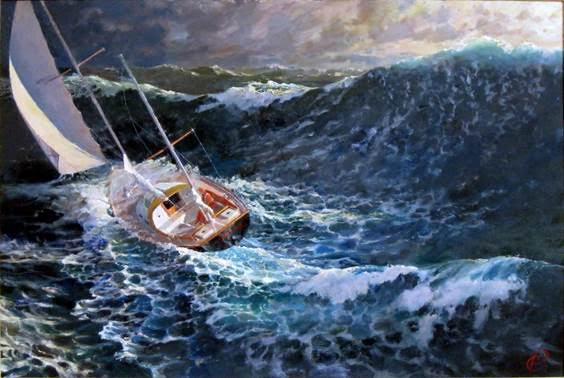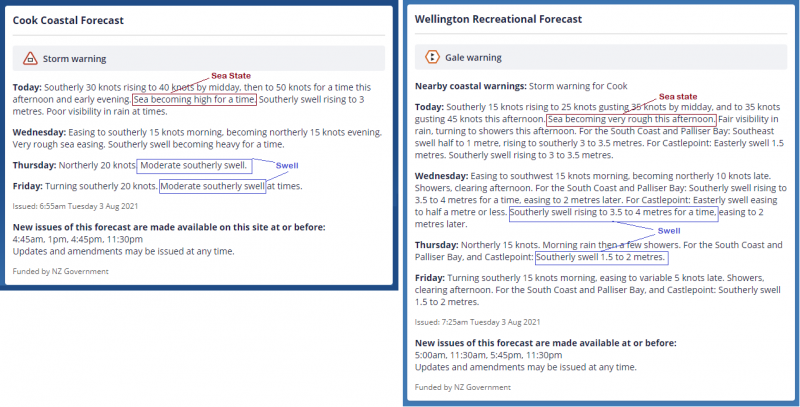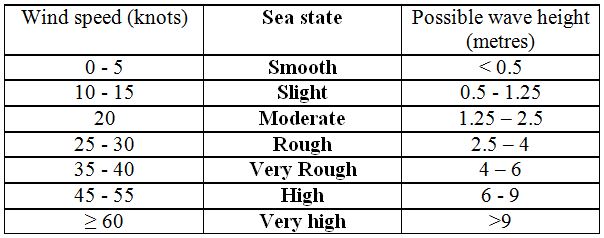To mark Safer Boating Week, we thought we'd dive in and help boaties work out what sea conditions to expect when they see both sea state and swell mentioned in our coastal and recreational marine forecasts. To get you in the mood, let's talk about various states of discomfort that can be found on a boat.
First, there’s the roll. When you’re finally anchored in a wind-free bay, all settled with your G&T for the evening, you find the boat doing a very small ‘roll.’ A roll is very annoying at anchor, especially once the vessel gets side-on. At worst, it means sleeping on your back, spread-eagled, since it is more or less impossible to sleep on your side. At best, you get woken up every few hours by the tiniest ‘clink’ of something rolling around, unsecured, in a locker, somewhere (not to be found until broad daylight).
This roll is actually a sneaky, small swell making its way into the bay. There is often a fairly long length of time between each roll. This is because the roll was generated miles away, where it was windy, and often a day earlier. It has travelled all this way just to upset your night’s sleep. Note: Larger rolls (swells) tend to occur in more exposed locations, such as your Dad’s secret fishing spot, making for a sickness-inducing gunnel-to-gunnel roll.

Then there’s the chop. This one is a short sea-way, also known as wind-wave. It is produced by the local wind, which by Murphy’s law means it is typically against you all the way home. The key difference with the chop is that it goes away as soon as the wind drops out, or as soon as you get close in to the lee of the land. Chop affects different craft in different ways. The average fishing tinnie bang-bang-bangs into it, all the way home, since the waves are about the same length as the tinnie. Larger launches often have less trouble with the chop (wind-wave), since their waterlines are usually longer and they may be able to span a couple of waves at a time – unless the sea is side-on. Sailing vessels tend to do better in a chop or sea-way, moving more smoothly through the waves due to the stabilising effect of both sails and keel

Finally, the rogue wave. So, what happens when you combine the chop (wind-wave) and the roll (swell)? Sometimes these two things are coming from different directions, and often they are of varying sizes. In New Zealand, while the wind-wave is often larger, the swells can be more difficult to deal with from a helming and stability perspective.
The combination of chop (wind wave) and roll (swell) can lead to the infamous “rogue wave” – an intermittent but very large wave, that is much bigger than either the general wind-wave or the general swell. It is the worst-case combination of both:

Storm Break: Painting by Chuck Paine
Applying this to the forecast
MetService coastal and recreational marine forecasts contain a quantitative roll/swell size (e.g. southerly swell averaging 2 metres), but a good rule of thumb is that you can expect the odd peak roll/swell of one-and-a-half-times that (e.g. of occasional 3 metres).

The forecast also contains a qualitative 'sea state' description of the chop (wind-wave or sea-way), and this equates to the wave heights as given in the table below:

Sea state as a function of wind speed (MetService)
For example, 15 knots of wind produce a ‘slight sea’, of average size 0.5 metre but with the occasional 1.25 metres moving through. A good rule of thumb is that you can expect the odd peak sea of roughly twice that of the average, every so often.
If you’re in open water and expecting to be affected by both the roll (swell) and the chop (sea-way), then the combination of both is what you actually get out on the water. It is just as possible to have both a significant sea state as well as swell. When we combine wind-waves (chop) and swell waves, we call this the combined wave.
It is a complicated formula to calculate the combined wave (see table below), but in our example of 15 knots of wind with an average swell of 2 metres, you’d expect a combined wave between 2.1 metres (0.5m sea, 2m swell) and 3.4 metres (a worst-case of 1.5m sea and 3m swell). For us boaties, that basically means a combined wave 2-3.5m, give or take.
Combined wave calculation table
We hope this helps explain how to interpret what the forecast is really telling you about the sea conditions you can expect out there. For more detail about the difference between sea state and swell, check out our sea and swell blog here: Sea state and swell.
You can also find more information on our marine forecasts in these blogs: Understanding MetService's Coastal Marine Forecasts and Understanding MetService's Recreational Marine Forecasts. Happy boating!